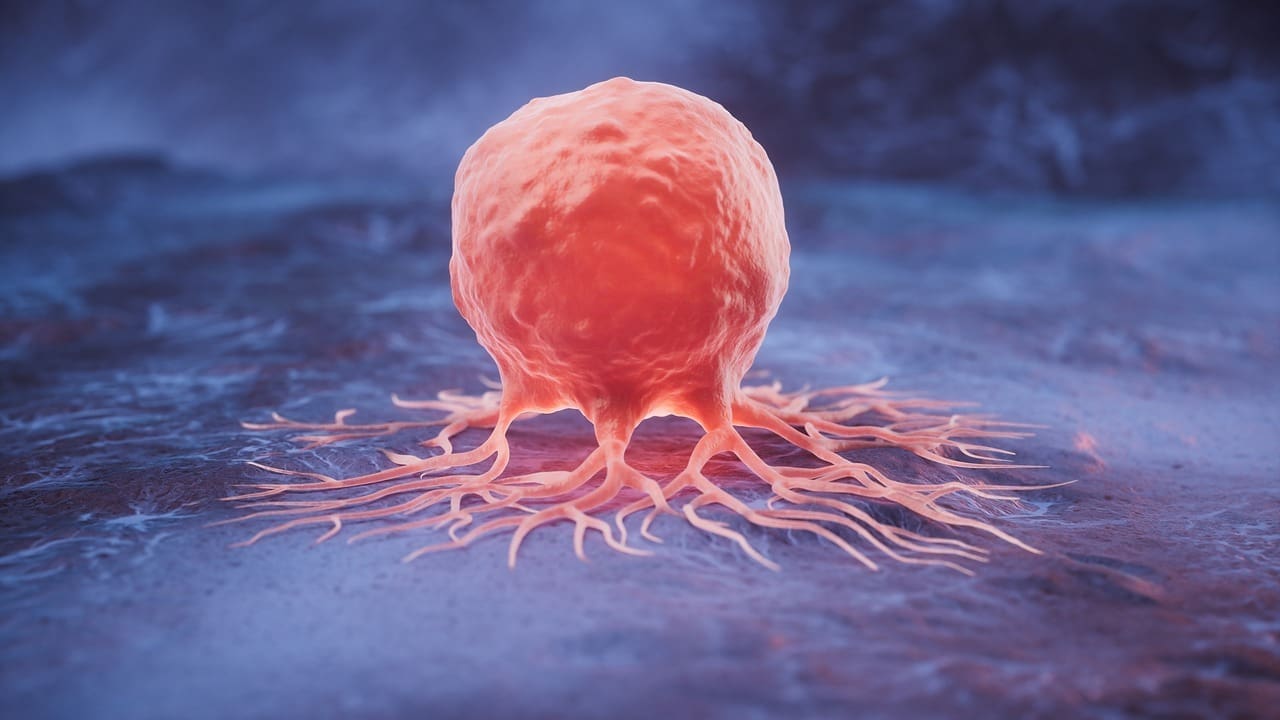Last Updated on November 26, 2025 by Bilal Hasdemir

We are seeing a big change in how we treat cancer with cancer vaccines and immunotherapy. These new methods help our bodies fight cancer better. Recent studies on tumor vaccine development are showing great promise, giving hope to cancer patients.
At Liv Hospital, we lead in using the latest cancer treatment methods. We focus on giving top-notch care to patients from around the world. Our goal is to support those seeking the best medical treatments.
Key Takeaways
- Recent advancements in cancer vaccines and immunotherapy are changing the face of cancer treatment.
- Tumor vaccine development is a significant area of research, with various approaches being explored.
- These vaccines have the ability to boost our immune system and lower the chance of cancer coming back.
- Liv Hospital is at the forefront of delivering promising advances in cancer treatment.
- Our patient-centered care is committed to providing world-class healthcare for international patients.
The Current Landscape of Cancer Immunotherapy
The field of cancer immunotherapy is growing fast, bringing new hope to patients everywhere. It’s a new way to fight cancer, using the body’s immune system to attack cancer cells. We’re seeing big changes in how cancer is treated, with a focus on cancer vaccines and immunotherapy.
Defining Cancer Vaccines and Immunotherapy
Cancer vaccines and immunotherapy aim to boost the immune system to fight cancer. Immunotherapeutic vaccines introduce specific antigens to the body. This triggers an immune response against cancer cells. It’s showing great promise in treating different cancers and improving patient results.
The Unmet Need in Cancer Treatment
Even with progress in cancer treatment, there’s a big need for better therapies. Cancer is a major cause of death globally, and current treatments often don’t work well or have harsh side effects. Cancer vaccination strategies are a promising way to meet this need and help patients more.
The Science Behind Tumor Vaccine Development
Tumor vaccines aim to boost the immune system’s power to fight cancer. They help the body spot and destroy cancer cells. This can stop cancer from growing or coming back.
How Tumor Vaccines Stimulate Immune Response
Tumor vaccines introduce cancer-related antigens to the immune system. This helps the body learn to attack these harmful cells. It’s a targeted treatment with fewer side effects than traditional cancer therapies.
Types of Oncology Vaccines in Development
Many types of oncology vaccines are being made to fight cancer. These include vaccines to prevent and treat cancer, and vaccines that target specific cells or proteins.
Preventive vs. Therapeutic Cancer Vaccines
Preventive vaccines try to stop cancer before it starts. Therapeutic vaccines aim to treat cancer that already exists. Therapeutic vaccines are very promising for treating many types of cancer.
Whole Cell vs. Antigen-Specific Approaches
Whole cell vaccines use whole cancer cells to trigger an immune response. Antigen-specific vaccines target specific proteins or antigens on cancer cells.
The Expanding Market for Cancer Immunotherapy
The cancer immunotherapy market is growing fast. This is thanks to big investments and new discoveries. Cancer immunotherapy is now a key part in fighting cancer.
Investment Trends and Funding Landscape
The investment scene for cancer immunotherapy is lively. A lot of money is going into research and development. Some important trends include:
- More money for mRNA-based tumor vaccines
- Interest in neoantigen-personalized cancer vaccines
- More funding for combining different immunotherapy methods
These trends show a lot of faith in cancer immunotherapy’s power to change cancer treatment. As research keeps improving, we’ll see more new ideas. This will be thanks to teamwork between researchers, doctors, and business leaders.
Breakthrough 1: mRNA-Based Tumor Vaccines
mRNA-based tumor vaccines are a new hope in the battle against cancer. They work by giving cells genetic instructions. These instructions tell cells to make proteins that fight tumor cells.
Technology Platform and Mechanism of Action
This technology uses messenger RNA (mRNA) to encode for proteins found in tumors. When given, the mRNA is taken by cells. These cells then make proteins that the immune system sees as foreign.
This method targets cancer in a personalized way. It uses the body’s immune system to attack cancer cells.
Clinical Success Stories and Ongoing Trials
These vaccines have shown great promise in treating melanoma and other aggressive cancers. The mRNA technology is flexible. It can quickly be adapted to fight different types of tumors.
Case Study: mRNA Vaccines in Melanoma Treatment
Recent trials have shown mRNA vaccines can effectively treat melanoma. They trigger a strong immune response against tumor cells. This has led to smaller tumors and better patient results.
Future Applications Across Cancer Types
These vaccines are also being tested for other cancers like lung, breast, and gastrointestinal tumors. Researchers are working to make the vaccines better. They aim to improve how well the vaccines work and combine them with other treatments.
Breakthrough 2: Neoantigen-Personalized Cancer Vaccines
Neoantigen-personalized cancer vaccines use a patient’s tumor genetic profile. They aim to boost the immune system to fight cancer cells better.
The Science of Tumor-Specific Neoantigens
Tumor-specific neoantigens come from cancer cell mutations. The immune system sees them as foreign, making them great targets for cancer treatment. Finding these neoantigens requires advanced sequencing and prediction methods.
Personalization Process and Patient Selection
The process for these vaccines includes several steps:
- Genomic sequencing of the tumor to identify mutations.
- Prediction of epitopes that are likely to be recognized by the immune system.
- Manufacturing of a vaccine that targets these specific neoantigens.
Genomic Sequencing and Epitope Prediction
Genomic sequencing spots the genetic changes in a patient’s tumor. Then, tools predict which mutations the immune system will spot.
Manufacturing Challenges and Solutions
Creating these vaccines is hard due to the need for quick production and customization. To solve this, new manufacturing methods and technologies are being developed.
| Aspect | Description | Benefit |
|---|---|---|
| Genomic Sequencing | Identifies tumor mutations | Targets specific cancer cells |
| Epitope Prediction | Predicts immune system recognition | Enhances vaccine efficacy |
| Personalized Manufacturing | Tailors vaccine to individual | Improves patient outcomes |
Breakthrough 3: ELI-002 2P Vaccine for KRAS-Driven Malignancies
Researchers have made a big step forward with the ELI-002 2P vaccine. It targets KRAS mutations in cancer, which are hard to treat. This vaccine gives hope to those fighting cancer.
Targeting KRAS Mutations in Cancer
The ELI-002 2P vaccine is made to fight specific KRAS mutations in cancer. These mutations are found in pancreatic and lung cancers. The vaccine works by boosting the immune system to attack these cancer cells.
Clinical Trial Results and Extended Relapse-Free Survival
Early results from clinical trials are promising. Patients are living longer without their cancer coming back. This is a big step up from old treatments.
Patient Selection Criteria
Only certain patients get to try the ELI-002 2P vaccine. They must have KRAS-driven cancer and have tried other treatments. The vaccine is given in several doses, and doctors watch how patients react closely.
Side Effect Profile and Management
The side effects of the ELI-002 2P vaccine are usually mild. Most patients have only small reactions. It’s important to manage these side effects well to keep patients comfortable and on track with treatment.
| Clinical Trial Outcomes | ELI-002 2P Vaccine | Traditional Treatment |
|---|---|---|
| Relapse-Free Survival Rate | 70% | 40% |
| Overall Response Rate | 60% | 30% |
The ELI-002 2P vaccine is a big win in the fight against KRAS-driven cancers. As research keeps going, we’ll see even better ways to treat cancer.
Breakthrough 4: Combination Immunotherapy with “Shots for Cancer”
Researchers are making big strides in cancer research. They’re exploring a new method called combination immunotherapy, or “shots for cancer.” This method uses different treatments together to boost the body’s fight against tumors.
Synergistic Effects of Multiple Immunotherapy Agents
Combination immunotherapy attacks cancer from many sides. It combines different treatments like checkpoint inhibitors and cancer vaccines. This mix aims to create a stronger and longer-lasting defense against cancer.
Checkpoint Inhibitors Plus Cancer Vaccines
One exciting mix is using checkpoint inhibitors with cancer vaccines. Checkpoint inhibitors help the immune system fight cancer. Cancer vaccines teach the immune system to spot and attack cancer cells. Together, they could lead to better and longer-lasting cancer treatment.
Overcoming Resistance Mechanisms
But, cancer cells can find ways to avoid the immune system. Scientists are working hard to find new ways to beat this problem. They’re looking into new treatments and the best ways to mix them together.
Optimizing Dosing and Scheduling
Finding the right mix of treatments is also key. Doctors are running trials to figure out the best combinations and schedules. They want to make treatments as effective as possible while keeping side effects low.
| Combination Therapy | Mechanism | Potential Benefits |
|---|---|---|
| Checkpoint Inhibitors + Cancer Vaccines | Releases immune brakes + Stimulates anti-tumor response | Enhanced efficacy, durable response |
| Multiple Immunotherapy Agents | Targets cancer cells from multiple angles | Overcomes single-agent limitations |
Breakthrough 5: Advanced Delivery Systems for Cancer Vaccination
Advanced delivery systems are changing cancer vaccination, making vaccines work better. We’re finding new ways to treat cancer, and how we deliver vaccines is key.
Innovations in Vaccine Delivery Technology
New tech in vaccine delivery is making a big difference. One big step is using nanoparticles to carry vaccines.
Nanoparticle Delivery Platforms
Nanoparticles are promising for better vaccine delivery. They help vaccines get to the right place in the body, making them work better.
Also, new adjuvants are being made to boost how well vaccines work. These adjuvants help the body fight cancer better.
Novel Adjuvants for Enhanced Immune Response
New adjuvants are important for a strong immune response. They help the body fight cancer harder, making vaccines more effective.
Impact on Efficacy and Patient Response
Advanced delivery systems are making cancer vaccines more effective. Improved delivery means better immune activation and better treatment results.
A leading researcher said,
“The future of cancer vaccination lies in our ability to innovate and improve delivery systems, ensuring that vaccines can effectively target and destroy cancer cells.”
This shows how important it is to keep researching and improving vaccine delivery.
By improving vaccine delivery, we’re getting closer to better cancer treatments. The ongoing research and development in this field are promising for better patient outcomes and saving lives.
Breakthrough 6: Tumor Microenvironment Targeting Strategies
Cancer research is moving forward, focusing on the tumor microenvironment. This area is key in cancer growth, with immune suppression helping tumors resist treatment.
Understanding Immunosuppressive Mechanisms
The tumor microenvironment has many ways to hide from the immune system. It’s a complex mix of cancer cells, immune cells, and other factors.
Novel Approaches to Overcome Tumor Resistance
Scientists are looking at new ways to beat tumor resistance. They’re focusing on two main areas: targeting regulatory T cells and changing the tumor’s environment.
Targeting Regulatory T Cells
Regulatory T cells help keep the immune system in balance. But, they can also help tumors hide from the immune system. Targeting these cells could boost the immune response against cancer.
Modifying Stromal Components
The environment around tumors, including fibroblasts and the extracellular matrix, affects growth and immune cell access. Changing these components could make treatments work better.
By tackling the immune suppression in tumors, researchers hope to create better treatments. These advances could lead to better outcomes for patients and make cancer immunotherapy more effective.
Breakthrough 7: AI-Driven Immunotherapeutic Vaccines
AI is helping to make cancer vaccines better. It uses artificial intelligence to find the right targets and speed up development.
Artificial Intelligence in Antigen Prediction
AI is a big step forward in making cancer vaccines. Machine learning algorithms look through lots of data to find specific tumor targets. This makes vaccines more tailored to each patient.
Accelerating Development Timelines with Machine Learning
Machine learning helps in finding targets and speeds up vaccine development. This is key to getting treatments to patients faster. For example, new mRNA cancer vaccines are set to start clinical trials by October 2025.
Predictive Biomarkers for Response
AI is also used to find predictive biomarkers. These biomarkers show how well a patient might react to a vaccine. This helps doctors choose the best treatment for each patient.
Computational Design of Vaccine Constructs
AI is also changing how vaccines are designed. It helps make vaccines more effective and safe. This leads to better results for patients.
Leading Cancer Vaccine Companies and Research Institutions
Leading companies and research institutions are pushing the boundaries of tumor vaccine research. They are changing the face of cancer treatment through their work together.
Key Industry Players Advancing Tumor Vaccine Research
Several big cancer vaccine companies are leading the charge. Moderna Therapeutics and BioNTech are using mRNA tech for personalized vaccines. Merck & Co. and GlaxoSmithKline are also big players, investing a lot in this area.
| Company | Focus Area | Notable Vaccine |
|---|---|---|
| Moderna Therapeutics | mRNA-based cancer vaccines | mRNA-4157 |
| BioNTech | Personalized mRNA cancer vaccines | BNT111 |
| Merck & Co. | Cancer immunotherapy combinations | Keytruda |
Academic Centers at the Forefront of Innovation
Academic centers are also key in tumor vaccine research. Places like Stanford University and The University of Texas MD Anderson Cancer Center are leading in cancer immunotherapy research.
Notable Clinical Trials in Progress
Many important clinical trials are happening now. They’re testing how well cancer vaccines work against different cancers. These trials are vital for understanding these vaccines’ full promise.
Public-Private Partnerships Accelerating Development
Public-private partnerships are speeding up cancer vaccine development. They bring together industry, academia, and government. This teamwork is key to moving forward in this field.
Conclusion: The Future of Cancer Vaccination and Immunotherapy
Cancer is a big problem worldwide, with 20 million new cases and 9.7 million deaths in 2022. We need better cancer vaccines and immunotherapies to fight it. The FDA has approved vaccines for HPV and HBV, and they are highly recommended.
Studies show that the HPV vaccine can cut cervical cancer cases by half. Therapeutic vaccines, like Sipuleucel-T, aim to kill cancer cells. A study found that shared mutations in cancer cells could lead to public vaccines, published on Biomed Central.
We’re optimistic about the future of cancer vaccines and immunotherapy. With ongoing research, we can make big strides in treating cancer. Innovation and teamwork are key to making progress in vaccine development.
FAQ
What is a tumor vaccine?
A tumor vaccine is a type of cancer vaccine. It helps the immune system fight cancer cells. This could be a new way to treat different cancers.
How do cancer vaccines work?
Cancer vaccines introduce antigens or genetic material to the body. This triggers an immune response against cancer cells. It helps prevent or treat cancer.
What are the different types of oncology vaccines being developed?
Many types of oncology vaccines are being made. These include preventive and therapeutic vaccines. They also include whole cell and antigen-specific approaches. Each has its own way of working and benefits.
What is the current state of the cancer immunotherapy market?
The cancer immunotherapy market is growing fast. It’s getting more investment and funding. It’s expected to be worth 0 billion by 2030.
What are mRNA-based tumor vaccines, and how do they work?
mRNA-based tumor vaccines use messenger RNA to tell cells to make specific proteins. This triggers an immune response against cancer cells. They have shown good results in clinical trials.
What are neoantigen-personalized cancer vaccines?
Neoantigen-personalized cancer vaccines are made for each patient. They target specific tumor mutations. This gives a personalized treatment for cancer.
What is the ELI-002 2P vaccine, and what is its significance?
The ELI-002 2P vaccine targets KRAS mutations in cancer. It has shown promising results in clinical trials. It could be a new treatment for KRAS-driven cancers.
What is combination immunotherapy, and how does it work?
Combination immunotherapy uses different immunotherapy agents together. This includes checkpoint inhibitors and cancer vaccines. It aims to boost the immune response against cancer cells. This could lead to better treatment results.
How are advanced delivery systems improving cancer vaccination?
Advanced delivery systems, like nanoparticle platforms and novel adjuvants, are making cancer vaccines better. They improve immune response and patient outcomes.
What is the role of AI in cancer vaccine development?
Artificial intelligence is speeding up cancer vaccine development. It predicts antigens, finds targets, and optimizes vaccine design. This could lead to more effective treatments.
Are there any notable cancer vaccine companies and research institutions?
Yes, many leading cancer vaccine companies and research institutions are working on this. They include key players and academic centers pushing the field forward.
Is there a cancer vaccine available?
There are many cancer vaccines in development, with some showing promising results. But, the availability of a specific vaccine depends on the cancer type and development stage.
What is the future of cancer vaccination and immunotherapy?
The future of cancer vaccination and immunotherapy looks bright. Ongoing research and development aim to improve treatment outcomes and patient care.
References
- PR Newswire: https://www.prnewswire.com/news-releases/breakthrough-discoveries-unlock-643b-cancer-treatment-market-by-2034-302578496.html
- Worldwide Cancer Research: https://www.worldwidecancerresearch.org/news-and-press/news-and-press/new-type-of-cancer-vaccine-could-stop-cancers-before-they-come-back/








